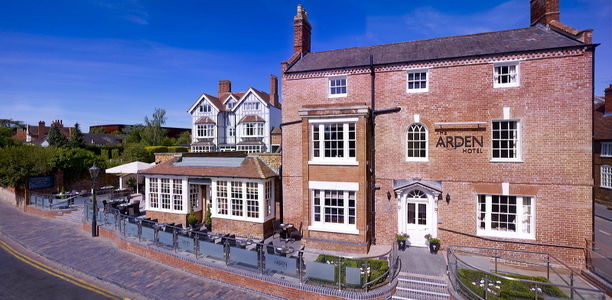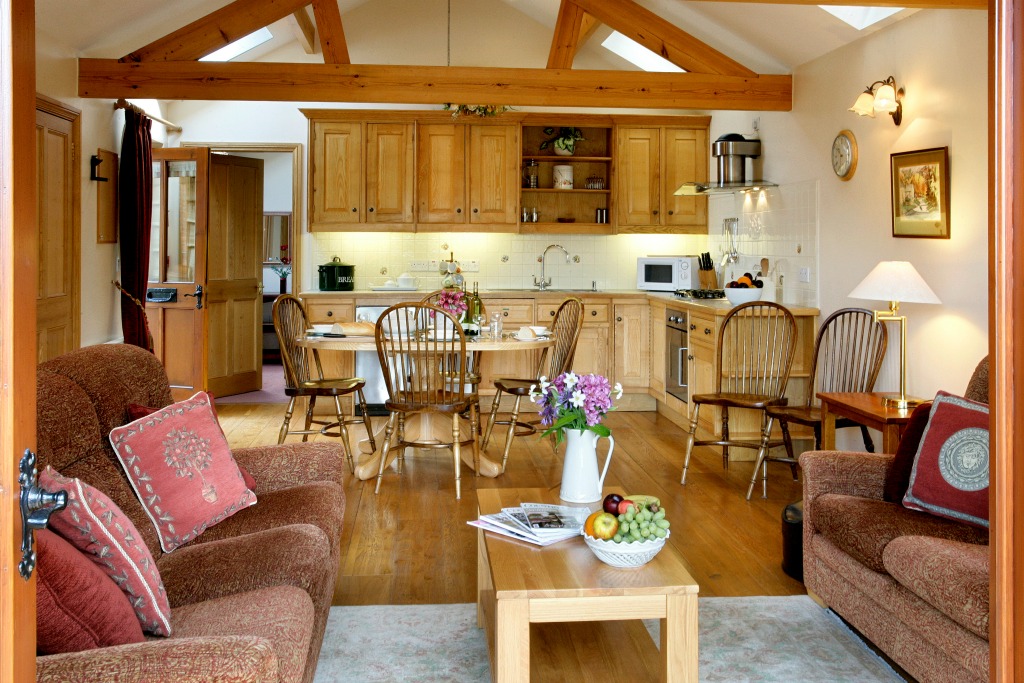This peaceful park is in a farm setting with lovely countryside views. All pitches are…
Harbury, Chesterton and the Lakes

4 miles (6.4kms)
About the walk
This walk starts from one of the most historic places in Warwickshire, for Harbury was once the home of a huge ichthyosaurus that roamed the local countryside. Its skeleton and those of a plesiosaurus and several marine dinosaurs have been found in the old quarries here, as have Bronze Age cooking pots.
In about 500 BC there was an Iron Age camp (or byrig) in these parts. It was ruled by a woman called Hereburh, and Harbury's name derives from 'the fortified place belonging to a woman called Hereburh'. The Romans were also here. Their great Fosse Way forms one of the boundaries to the village, and Roman culverts can still be seen. Ridge and furrow fields reveal evidence of Saxon farmers, and an area called Temple End suggests the land was once owned by the Knights Templar.
Minor poets
The parish church of All Saints is mostly Norman and dates from the 13th century. It sports a sundial carrying the accusatory inscription 'Tyme flyeth, what doest thou?' The Wagstaffes were the 'proprietors' of the manor from the time of Henry VIII (1491–1547), and inside the church is a memorial to Jane Wagstaffe who lived here during Elizabeth I's reign. Behind the church is the Tudor 'Wagstaffe School' which was founded by Jane's descendants in 1611. The vicar from 1746 to 1771 was Richard Jago who was something of a minor poet. Today, Harbury is a delightful old village where you can see attractive cottages, imbibe in fine pubs and admire some lovely old trees.
From Harbury, the walk takes you south along peaceful country lanes, passing by attractive lakes to reach the tiny hamlet of Chesterton – a place of rare beauty where time appears to have stood still. The name of the hamlet is of Roman origin. The village was hit very badly by the plague of 1349, and by the 15th century there were only three families residing here. It has recovered a little since then, but much of its former extent has survived for archaeologists to discover.
Special church
Today there is no shop or pub in this lovely hamlet, but St Giles' Church is rather special. Its battlemented parapet runs the entire length of the chancel, and is set on walls which are 3ft (0.9m) thick. It was founded by Richard the Forester and was presented to the priory at Kenilworth in Richard II's time (1377–99). Sir Edward Peyto built the wonderful landmark four-sail windmill. The return route takes you over pastureland and cultivated fields, passing by an old metal windpump before reaching Harbury village.
Walk directions
Leave the car park behind the village hall and head south by football pitches to a gate in the far corner. Don't go through it, but bear right to follow the waymarkers for the Centenary Way. Cross a field to a second gate onto Bush Heath Lane. Turn left and walk down to a junction of lanes.
Go right here, signed 'Kingston Farm', over a cattle grid and along the grass verge of a driveway for about 600yds (549m), still following the Centenary Way. Where the Way goes off to the left, continue ahead along a quiet country lane. Soon the buildings of Kingston Barn farm will be to your left, but fork right to follow the lane as it goes to the right of the farm complex, to reach a lane going off to the right by a footpath guide post.
Proceed right along this lane, which weaves its way through some very attractive countryside with long views of Chesterton windmill. When you reach the garden walls to Kingston Manor Farm, turn right again and continue along the lane, now heading in a northwesterly direction, passing some lakes. After about 0.5 miles (800m) of easy walking past the picturesque lakes, the lane arcs left up towards St Giles' Church in the hamlet of Chesterton. Through a gate or over a cattle grid, continue up the lane towards the church.
Some 120 paces before reaching the church gate, go right through a kissing gate and ascend over cultivated fields and pastureland, following the footpaths and heading generally northeast back towards Harbury. The footpath crosses a stile and passes to the right of an old wind pump and Bunker's Hill. Over the brow of the hill head towards the left-hand of a group of houses, then left along the field edge to a gate onto Harbury Lane, near Harbury Heath House. Turn right, and after 100yds (91m) turn left through a metal gate on a footpath that initially is to the right of the field hedge and later to the left, until you reach Bush Heath Lane. Go through a gate and turn right onto a lane, then after about 30 paces go left through a gate to rejoin the Centenary Way once again. The path leads towards Pineham Farm. After about 200yds (183m), go left beside a gate to return to the car park at the back of Harbury village hall.
Additional information
Farm driveways and field paths
Rolling Warwickshire countryside
Under control at all times
OS Explorer 206 Edge Hill & Fenny Compton
Village hall car park in Harbury (closed overnight)
None on route
WALKING IN SAFETY
Read our tips to look after yourself and the environment when following this walk.
Find out more
Also in the area
About the area
Discover Warwickshire
The sparkle of sunlight on a gentle river as it meanders through beautiful countryside; the reflections of sailing boats on a lake; relaxing with a pint in the garden of an old English pub in a picturesque village; brightly coloured narrow boats making their way through a flight of lock gates; the imposing silhouette of an historic castle. These are the scenes that make Warwickshire a delight.
There may be few seriously high hills in this fertile plain, but it is an area full of attractive walking in rolling countryside, blessed with a fascinating history and wonderful places and buildings to visit. This is Shakespeare’s county, and the footprint of the famous Bard appears almost everywhere. He was born and brought up around the beautiful Warwickshire town of Stratford-upon-Avon, and many of his plays draw upon his own experiences in the area.
Warwickshire has a history that embraces the Civil War, castles and large country houses are scattered over the county. Warwick Castle is the home of the Earl of Warwick, Kenilworth Castle was a stronghold for lords and kings of England in the 11th and 12th centuries, and so the list goes on.
Nearby stays
Restaurants and Pubs
Nearby experiences
Recommended things to do
Why choose Rated Trips?
Your trusted guide to rated places across the UK
The best coverage
Discover more than 15,000 professionally rated places to stay, eat and visit from across the UK and Ireland.
Quality assured
Choose a place to stay safe in the knowledge that it has been expertly assessed by trained assessors.
Plan your next trip
Search by location or the type of place you're visiting to find your next ideal holiday experience.
Travel inspiration
Read our articles, city guides and recommended things to do for inspiration. We're here to help you explore the UK.



















